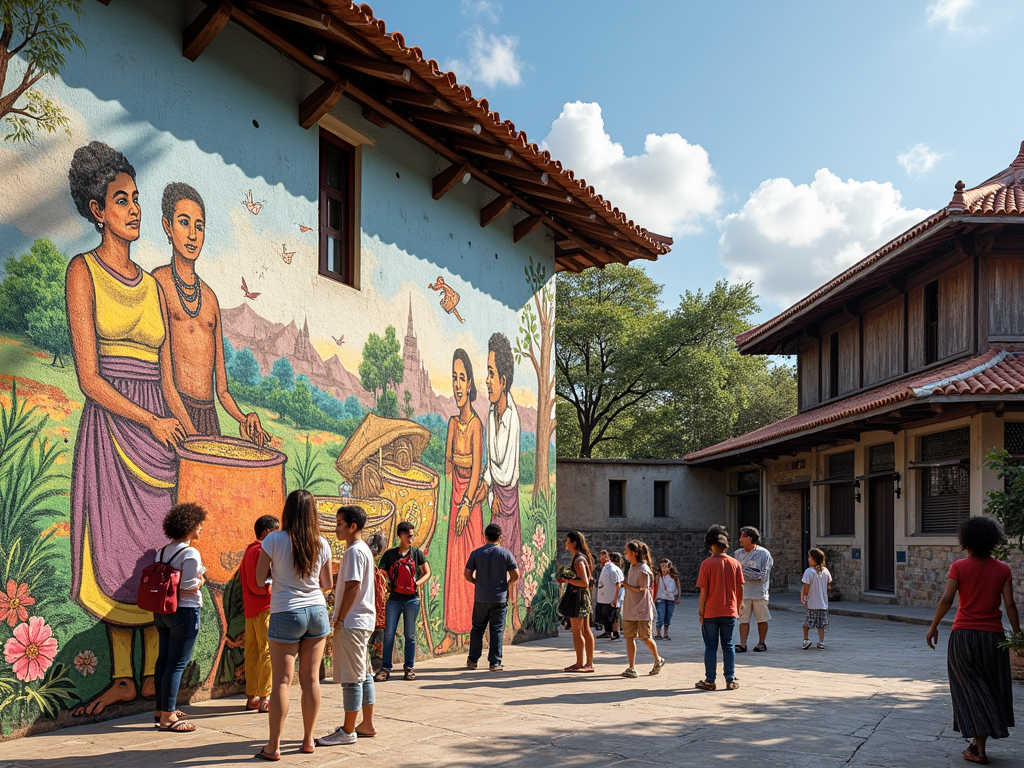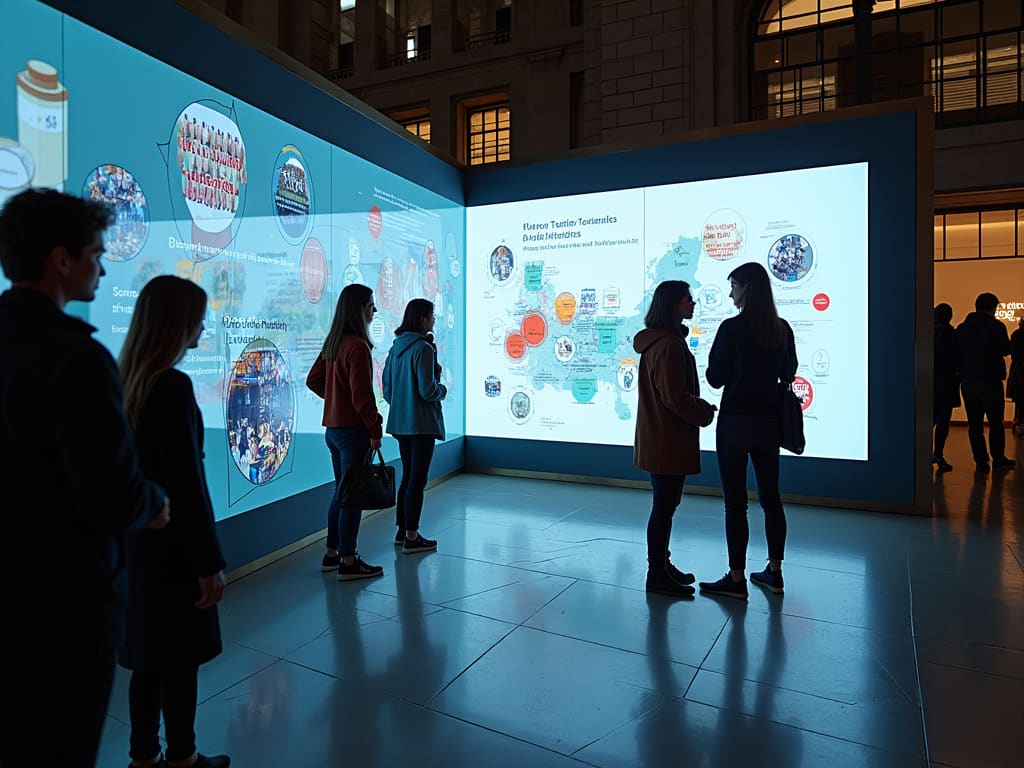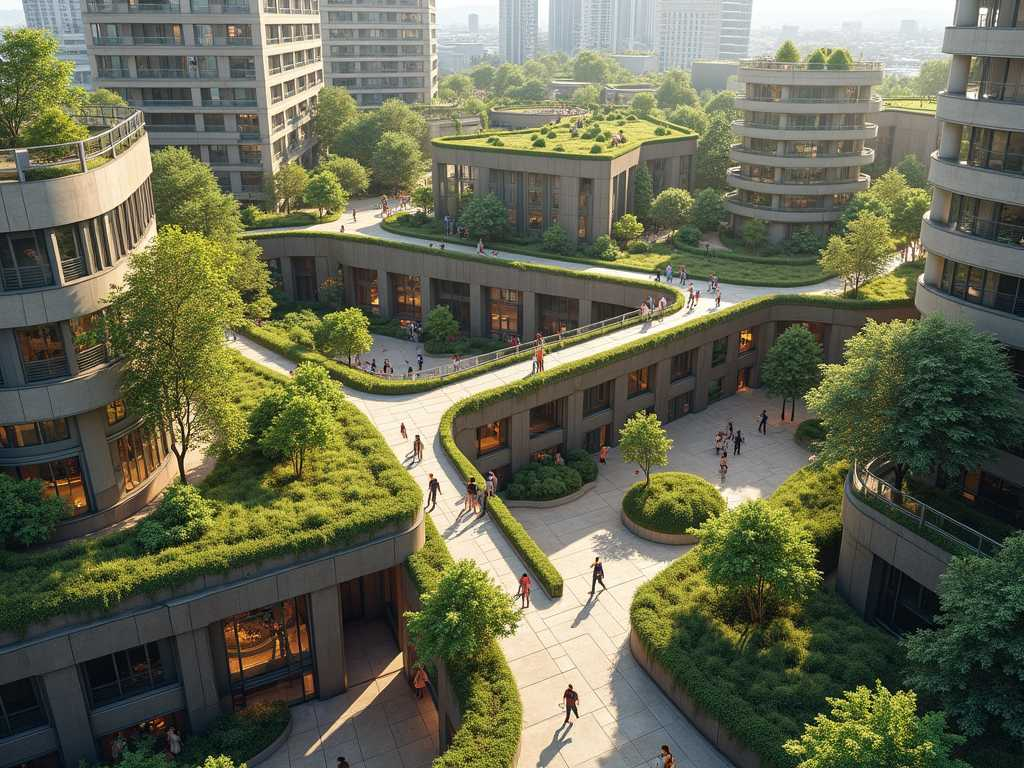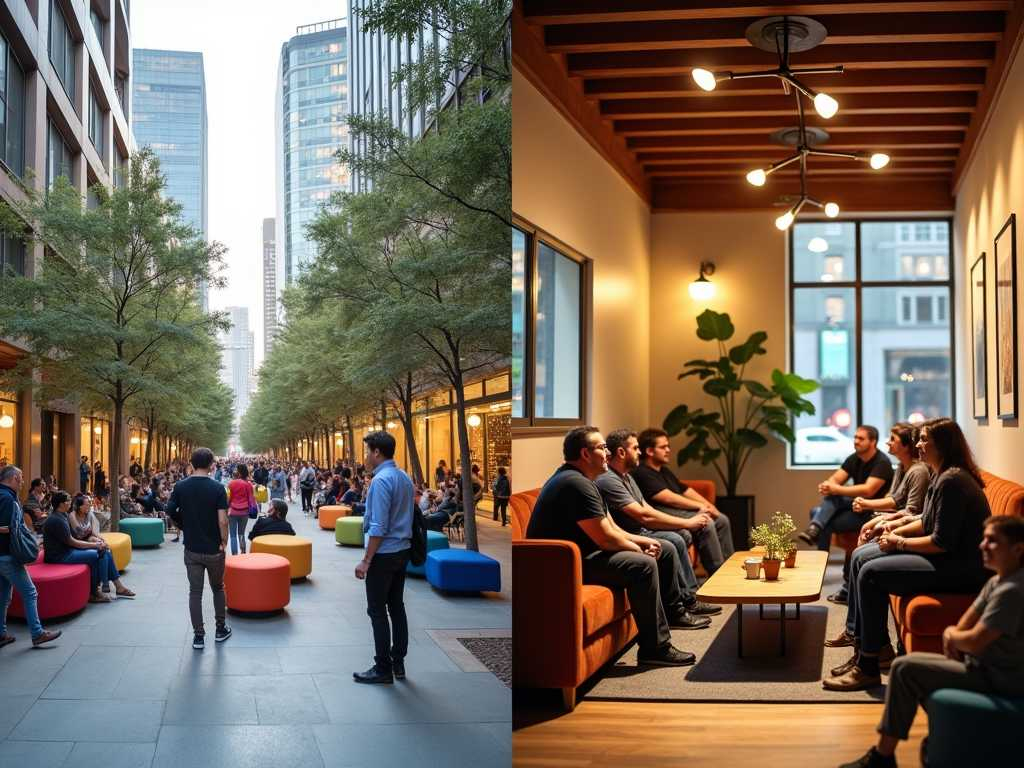As a cultural strategist and interior designer, I’ve seen how transitional spaces can become platforms for shared experiences that enrich community ties. At Curvspace, we focus on designs that don’t just look good but also cultivate a sense of cultural belonging and pride. This article highlights how intermediate areas can heighten social and cultural impact, from hosting impromptu gatherings to reflecting local identity. Discover design techniques that harness social energy and bring communities closer together.
Jump to:
The Power of Transitional Spaces
Transitional spaces are the in-between areas that connect different parts of a building or urban environment. These spaces, often overlooked, have immense potential to foster social interaction and community engagement. By thoughtfully designing these areas, we can create opportunities for spontaneous encounters, cultural expression, and shared experiences that strengthen community bonds.
Bridging Public and Private Realms
Transitional spaces serve as a bridge between public and private realms, offering a unique opportunity to blend the two in ways that encourage social interaction. These spaces can take many forms, such as:
- Lobbies and entryways
- Courtyards and plazas
- Corridors and hallways
- Staircases and landings
- Porches and balconies
By carefully considering the design of these spaces, we can create environments that naturally draw people together and facilitate meaningful connections.
Cultivating Cultural Identity

One of the most powerful aspects of transitional spaces is their ability to reflect and reinforce cultural identity. By incorporating local art, materials, and design elements that resonate with the community’s heritage, these spaces can become powerful symbols of shared culture and history.
Design Strategies for Social Impact
To harness the full potential of transitional spaces, consider implementing the following design strategies:
1. Flexible Seating Arrangements
Incorporate versatile seating options that can be easily rearranged to accommodate different group sizes and activities. This flexibility allows the space to adapt to various social needs and encourages spontaneous gatherings.
2. Interactive Art Installations
Commission local artists to create interactive art pieces that invite engagement and spark conversations. These installations can serve as focal points for community interaction and cultural expression.
3. Biophilic Design Elements
Integrate natural elements such as plants, water features, and natural materials to create a calming and inviting atmosphere. Biophilic design has been shown to reduce stress and promote well-being, making these spaces more appealing for social interaction.
4. Lighting as a Social Catalyst
Use lighting design to create ambiance and define different zones within the transitional space. Thoughtful lighting can guide movement, highlight gathering areas, and create a welcoming atmosphere that encourages people to linger and interact.
5. Technology Integration

Incorporate technology in ways that enhance social interaction rather than isolate individuals. For example, interactive displays that showcase community events or digital art installations that respond to collective input can foster a sense of shared experience.
Case Studies: Successful Transitional Spaces
The High Line, New York City
The High Line is a prime example of how a transitional space can transform urban environments and foster community engagement. This elevated linear park, built on a former railway line, serves as a connector between neighborhoods while providing a unique public space for relaxation, art installations, and community events.
Think and Do, Camden, London
The Think and Do initiative in Camden demonstrates how underutilized spaces can be transformed into vibrant community hubs. By repurposing a former café and activating tenant resident association halls, this project created spaces for diverse community members to come together, share ideas, and collaborate on local initiatives.
Measuring Social Impact
To ensure that transitional spaces are truly serving their purpose, it’s essential to assess their social impact. Consider the following methods:
- Observational studies: Monitor how people use the space and interact with each other over time.
- Surveys and interviews: Gather feedback from community members about their experiences in the space.
- Social network analysis: Map the connections formed between individuals and groups who frequent the space.
- Event participation metrics: Track attendance and engagement at community events held in the space.
Challenges and Considerations
While the potential of transitional spaces is significant, there are challenges to consider:
- Inclusivity: Ensure that the space is welcoming and accessible to all members of the community, regardless of age, ability, or cultural background.
- Safety: Design with security in mind, balancing openness with appropriate safety measures.
- Maintenance: Plan for ongoing upkeep to ensure the space remains inviting and functional over time.
- Programming: Develop a strategy for activating the space with regular events and activities to sustain community engagement.
Conclusion

Transitional spaces hold immense potential for inspiring community and fostering social connections. By thoughtfully designing these in-between areas with cultural sensitivity, flexibility, and engagement in mind, we can create powerful catalysts for community building. As we continue to shape our urban environments, let’s recognize the value of these spaces and harness their energy to create more vibrant, connected communities.
At Curvspace, we’re committed to designing transitional spaces that not only look beautiful but also serve as dynamic platforms for social interaction and cultural expression. By embracing the principles outlined in this article, we can transform overlooked areas into the heart of community life, where shared experiences and meaningful connections flourish.
References
- Harnessing Social Energy in Transitional Spaces to Inspire Community
- Creating space for community imagination – Transition Together
- Learn About Design for Social Impact
- (PDF) Public Space as Cultural Resource
- (PDF) Creating Sense of Community: The role of public space
- The Spaces Between: Exploring the Psychology of Transitional Spaces
- [PDF] Understanding ‘Inclusiveness’ in Public Space: | UBC Sustainability
- Community Involvement – Transition Network
Disclosure
Our content is reader-supported. This means if you click on some of our links, then we may earn a commission. Commissions do not affect our editor’s opinions or evaluations. Learn more about our editorial process.

About the Editorial Staff
The Curvspace editorial team comprises a diverse group of experts on intermediate and threshold spaces in homes and workplaces. Architects and interior designers, civil engineers and artists, environmental and behavioral psychologists, sociologists and anthropologists. All collaborate to create helpful content, that explores the full potential of these often-overlooked areas to enhance our daily lives.


